 When my daughter started to struggle at school and I was trying to figure out what was going on, I was surprised to discover that learning disabilities in children are quite common.
When my daughter started to struggle at school and I was trying to figure out what was going on, I was surprised to discover that learning disabilities in children are quite common.
According to the National Center for Learning Disabilities, one in five children has a learning or attention issue.
Many children with learning disabilities are highly intelligent, so their disability can be hidden– even to teachers. For me, it became evident when my daughter’s attitude about school totally changed.
“Mom, I don’t want to go!”
There I was again…irritated at the front door, while my daughter was sprawled out in the hallway having a meltdown about going to school. I was trying to come up with a magic phrase that would get her off the floor and out the door.
Reflecting back, I believe that her meltdowns were about failure at school. Why would she run gleefully out the door for a day full of disappointment? Why would she want to fail in front of her best friends at school–their perfect scores next to her failing one?
My daughter went from truly loving school in kindergarten to hating school in first grade. I kept wondering who had swapped my bubbly, sweet daughter with this frustrated, sad child? As a mother, I wanted to do everything I could to help her. As a former teacher, I wanted to figure out the puzzle behind her difficulties.
If this account rings true and you are also striving to figure out why your child is struggling at school, it’s helpful to start by looking at the common signs of learning disabilities. With my daughter, I noticed some warning signs when she was in preschool. However, the earliest that a learning disability can be diagnosed is in elementary school (around age seven to eight).
Looking Back on the Early Signs
 When my daughter was three and a half, I noticed that she had trouble identifying letters and counting. These difficulties stuck out, because she was stronger in other learning areas. For instance, she had an excellent memory for details. She could retell family vacation stories from a year ago, but she couldn’t recognize the letters in her name. While I was worried, I also knew that kids learn at different paces–so I did my best to be patient and positive.
When my daughter was three and a half, I noticed that she had trouble identifying letters and counting. These difficulties stuck out, because she was stronger in other learning areas. For instance, she had an excellent memory for details. She could retell family vacation stories from a year ago, but she couldn’t recognize the letters in her name. While I was worried, I also knew that kids learn at different paces–so I did my best to be patient and positive.
When she was in kindergarten, my daughter struggled to memorize words and write her name. She loved to tell complex imaginary stories, but she couldn’t recognize the same ten sight words that we went over every night. She also reversed letters in her printing. Again, many kids at ages four and five have similar challenges, so I tried to give it time.
But, perhaps like you, I had a nagging feeling that something else was going on. It was halfway through first grade (age six) that she started to fall behind in her reading progress. Spelling tests were a nightmare and caused immense anxiety.
Although recognizing the signs of early learning struggles are easier in hindsight, it can be helpful to better understand the symptoms. In the preschool years, signs of a possible learning disability may include:
Verbal skills:
- Delay in learning to speak
- Difficulty pronouncing words and learning new words
- Trouble rhyming words
Early learning skills:
- Challenges in learning the alphabet, numbers, time, and days of the week
Social skills:
- Restless and frequently distracted
- Difficulty interacting with peers
- Struggle to follow routines and directions
- Impulsive behavior
Physical skills:
- Delay in developing motor (movement) skills, such as balance and eye-hand coordination
- Difficulty with pencil grip, as well as hooks, buttons, zippers, etc.
If you are searching for the signs to determine whether your child has a learning disability, the National Center for Learning Disabilities has an interactive checklist that walks you through the various signs for different age groups. It cannot provide a diagnosis, but it can help you better understand your child’s behavior and decide if you should seek help.
Recognizing the Emotional Toll
 Alongside her learning struggles, I noticed that my daughter’s self-esteem started to falter. This truly pained me and I knew I needed to take action. I started by asking for some extra reading help at school and because my daughter was reading below grade level, the teacher was able to offer it.
Alongside her learning struggles, I noticed that my daughter’s self-esteem started to falter. This truly pained me and I knew I needed to take action. I started by asking for some extra reading help at school and because my daughter was reading below grade level, the teacher was able to offer it.
I predicted that when I broke the news to my daughter that she would have extra reading help, she would not be pleased; but I wasn’t prepared for her total despair. She shook with sadness and sobbed into her pillow.
She told me that she didn’t want to be “different” and she didn’t want to have something “wrong” with her. She was embarrassed to leave class to get extra help. I did the only thing I could at the time–I held her tight in my arms, comforted her, and promised that I would be there for her. She wasn’t the only one crying into her pillow that night.
It’s important that we, as parents, recognize the emotional toll connected to learning struggles. If your child is struggling in school, you may have noticed changes in their emotional or social behavior, such as:
- Low academic self-confidence – children who experience repeated failure at school have lower motivation and low confidence in their learning ability. They may have feelings of anger, frustration and embarrassment. Additionally, some children with learning disabilities may appear disruptive or oppositional in class.
- Loneliness and difficulty with peers – children with learning disabilities may have trouble making friends, have less secure friendships, experience being bullied or engage in bullying, or use negative social behavior to attract friends.
- Anxiety and depression – research shows that children with learning disabilities have higher levels of anxiety than their peers. New situations are particularly stressful. Studies also demonstrate that depression is linked to having a learning disability.
- Impacts on social and communication skills – 75% of children with learning disabilities have trouble with social relations. For some children, their processing of emotional and social information can be impacted, leading to misunderstandings and stressful social situations.
Help Guide is a non-profit group that provides information on mental health. They have practical advice on what to do as a parent of a child with learning disabilities. Parents might consider getting counseling help from a psychologist if their child is emotionally overwhelmed.
Using a Growth Mindset
To help with some of the emotional impacts of her learning struggles, my daughter’s school suggested we try growth mindset activities at home.
A growth mindset recognizes that with hard work and solid strategies, new abilities can be developed. A growth mindset focuses on the strategies we put forth to succeed, rather than depending on natural talent. It’s about moving from a fixed point of view, like “I can’t do it” to an open-minded belief, such as “I can’t do it yet, but I’ll be able to soon.”
Developing a growth mindset was a significant shift for my daughter. It changed her perspective and she was able to see her extra help at school as a building block for success; the result of which has continued to build self-esteem as the years have passed.
There are quality online resources available for working on a growth mindset with children. And here’s a bonus–putting these techniques to use is helpful for parents too!
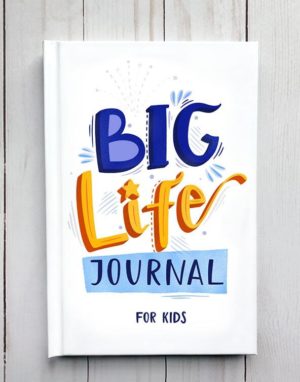 Mindset Kit lessons is a good place to start, because it sheds light on how we think as parents and our role in setting a growth mindset.
Mindset Kit lessons is a good place to start, because it sheds light on how we think as parents and our role in setting a growth mindset.- Proud to be Primary has an extensive collection of growth mindset activities and book suggestions for elementary age kids.
- For older children, there are some great conversation starters on Understood.org.
For our growth mindset activities, I decided to buy a Big Life Journal based on the recommendation of a friend. My daughter and I worked on it together before bedtime each night. I did the writing and reading to encourage her to participate. The journal told stories of people who’d overcome failures and setbacks. Together, we recorded her feelings, hopes and dreams.
Finding Answers in an Assessment
 The extra help at school didn’t seem to be enough to help my daughter overcome her struggles. I needed to know more about how she was learning and why certain tasks were difficult; these answers were found in a psychoeducational assessment. This type of assessment may also be referred to as a psych-ed eval or a neuropsych evaluation.
The extra help at school didn’t seem to be enough to help my daughter overcome her struggles. I needed to know more about how she was learning and why certain tasks were difficult; these answers were found in a psychoeducational assessment. This type of assessment may also be referred to as a psych-ed eval or a neuropsych evaluation.
Psychoeducational evaluations look into a child’s cognitive (brain-based skills) and academic skills (learning skills) in the context of their age and peers. It’s conducted by a psychologist and involves a combination of interviews, observation, and standardized testing.
When determining if your child could benefit from psychoeducational testing, some indicators could be:
- Continued struggle in specific learning areas despite extra effort and assistance.
- Worsening attitude toward school and avoidance of school work.
- Classroom behavior that is disruptive or inattentive.
- Your child’s teacher expresses concerns about their learning.
Through this assessment process, my daughter was diagnosed with a learning disorder in reading. When I saw it on paper, two opposing emotions flooded through me: relief and anguish.
The beautiful part of an assessment, however, is that it also gives parents a clear picture of their child’s strengths. For my daughter, this included excellent auditory learning ability, above average intelligence, and a well functioning memory. Having this knowledge about your child is hugely helpful in seeking the right kind of help and communicating needs and strengths with teachers.
Finding the Right Supports
 With the assessment we had a diagnosis; next we needed to get the right supports in place to help my daughter. An Individual Education Plan (IEP) was developed for her at her school. Depending on where you live, this can be challenging and can require a parent’s advocacy and follow up, but it is worth the work to have interventions put in place that can help your child succeed!
With the assessment we had a diagnosis; next we needed to get the right supports in place to help my daughter. An Individual Education Plan (IEP) was developed for her at her school. Depending on where you live, this can be challenging and can require a parent’s advocacy and follow up, but it is worth the work to have interventions put in place that can help your child succeed!
An IEP ensures that children who need help for learning disabilities (or learning help for any disability that impacts a student’s ability to access the curriculum) get the assistance they need. Part of the IEP includes accommodations that are needed for the student to be successful.
My daughter’s accommodations included not losing marks for misspelled words, extra time for assignments, and access to a laptop for using speech to text in class. She also participated in a specialized reading program.
Some of the diagnoses that could qualify a child for an IEP may include:
- Learning disabilities
- Emotional disorders
- Attention Deficit Hyperactivity Disorder (ADHD)
- Developmental delays
- Autism or other neurodiverse conditions
If you have read this far and have recognized some of the mentioned signs in your own child, it may feel overwhelming. Take a deep breath! You are not alone if you suspect that your child’s struggles in school might be due to a learning disability (LD). Here are some tips that can help you navigate unknown ground:
#1: Trust Your Gut and Learn about the Signs
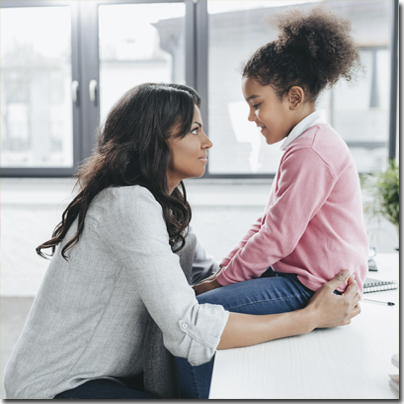 If you are concerned about your child’s learning, trust your feelings. It’s important to know what a LD is and what it is not; doing research can help with your understanding. It’s also important to be aware that not all schools or teachers know as much about LDs as you might think they would– so they may not identify an issue. Children can go through several grades (or more) before an LD is discovered. This is why LDs are sometimes called hidden disabilities.
If you are concerned about your child’s learning, trust your feelings. It’s important to know what a LD is and what it is not; doing research can help with your understanding. It’s also important to be aware that not all schools or teachers know as much about LDs as you might think they would– so they may not identify an issue. Children can go through several grades (or more) before an LD is discovered. This is why LDs are sometimes called hidden disabilities.
An LD involves trouble with a specific learning skill, like math, reading, or other brain functions—it’s not about intelligence or lack of effort. LDs can vary from mild to severe and a person can have more than one type. Some types are:
- Dyscalculia – understanding numbers and learning math facts
- Dysgraphia – handwriting, spelling and fine motor skills
- Dyslexia – reading and language processing
Children with LDs sometimes have additional conditions, such as attention deficit hyperactivity disorder (ADHD) or anxiety. Hearing, eyesight, and other developmental factors or processing disorders could also be related to struggles in learning; therefore it’s important to look at all potential causes.
The Child Development Institute offers a detailed parent handbook on learning disabilities that can help inform your research in all aspects: including definitions, mental health, common struggles, and specific strategies for how to help children. Smart kids with learning disabilities is another organization that works to empower parents and children so that all children can reach their potential.
#2: Reassure Your Child and Be Honest
 If you have questions and doubts, your child probably does too. Open and honest communication makes the situation less scary. Let your child know they are not alone; there are likely other kids at school also going through the same thing. If your child is having trouble learning, emphasize that you will work hard to get them what they need to succeed.
If you have questions and doubts, your child probably does too. Open and honest communication makes the situation less scary. Let your child know they are not alone; there are likely other kids at school also going through the same thing. If your child is having trouble learning, emphasize that you will work hard to get them what they need to succeed.
Reassure your child that they are intelligent and that the way their brain works just means they need different methods to learn. As with having differences in eye color, we all have different ways in which we learn. It’s important to talk openly about how your child has done nothing wrong, because feeling shame is often part of the LD experience.
It can also be helpful to let your child know that having a brain that works differently isn’t necessarily a bad thing. Many people with learning disabilities have other strengths and talents, like empathy, creative thinking, problem solving skills, and more.
Growth mindset activities might be helpful during these conversations, as well as reading up on neurodiversity, which views abilities (rather than deficits) along a spectrum of different ways of learning. Above all else, let your child know that you love them for exactly who they are.
#3: Join a Parents’ Group for Support
 It can feel lonely when your child is struggling, especially when you hear about all the achievements of your friends’ children. It’s also normal to grieve. If your child might have an LD, life will not be exactly as you envisioned it; it’s important to set yourself up with some support while you develop a new game plan.
It can feel lonely when your child is struggling, especially when you hear about all the achievements of your friends’ children. It’s also normal to grieve. If your child might have an LD, life will not be exactly as you envisioned it; it’s important to set yourself up with some support while you develop a new game plan.
Here are a few places to search out support:
- Facebook groups– there are groups for parents of children with dyslexia and other learning disabilities. You don’t need a diagnosis to join.
- Local support groups– most communities have local support groups for parents of children with learning disabilities or other disabilities. You can often find these groups through your closest children’s hospital, psychologists, regional social services organizations, or your child’s school.
- Learning disability associations– these groups often provide lists of parent resources.
#4: Talk With Your Child’s Educational and Medical Professionals
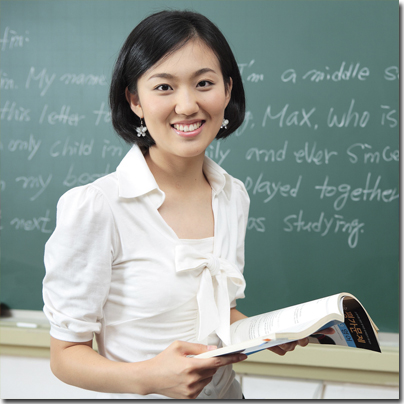 Education and medical systems are different worldwide and across countries/states/provinces. The steps you’ll need to take will be different depending on where you live, but a good starting point will always be talking to your child’s teacher and doctor. The National Centre for Learning Disabilities produced parent guidelines on speaking with your doctor about learning disabilities and speaking to your child’s educators. Their guidelines provide questions you can ask by learning area and by grade.
Education and medical systems are different worldwide and across countries/states/provinces. The steps you’ll need to take will be different depending on where you live, but a good starting point will always be talking to your child’s teacher and doctor. The National Centre for Learning Disabilities produced parent guidelines on speaking with your doctor about learning disabilities and speaking to your child’s educators. Their guidelines provide questions you can ask by learning area and by grade.
By connecting with your child’s teacher and doctor, you can make a decision about seeking a formal assessment by a psychologist. Some parents are reluctant to seek a diagnosis. It can be scary and having a diagnosis makes the problem real; but it doesn’t mean that all is lost. Instead, having an answer means you’ve successfully unlocked the first door in accessing the help your child needs and deserves.
Some schools have funding to cover the costs of assessments and may want to do their own. In other cases, parents may need to pay. If you have private insurance, you might be able to claim some of the cost; this usually requires a note from your child’s doctor.
#5: Consider Hiring a Tutor or Helping Your Child at Home
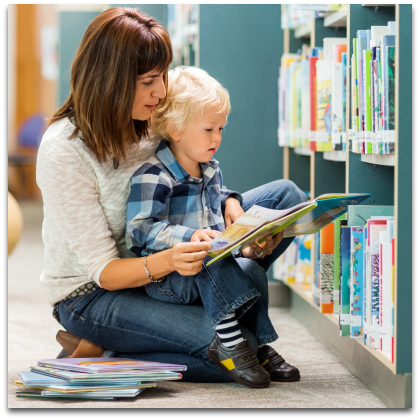 Even if your child isn’t diagnosed with a learning disorder, tutoring or extra practice can help them catch up. Look for a tutor who’s trained using methods that are especially helpful for children with learning disabilities. These methods are often essential to target the way children with LDs think. Below are some examples of these types of methods:
Even if your child isn’t diagnosed with a learning disorder, tutoring or extra practice can help them catch up. Look for a tutor who’s trained using methods that are especially helpful for children with learning disabilities. These methods are often essential to target the way children with LDs think. Below are some examples of these types of methods:
- Reading – some of the most highly recommended programs are based on an Orton-Gillingham (OG) approach. The Dyslexia Resource is a non-for-profit that explains the benefit of this approach. The Barton Program, Toe-by-Toe and All About Learning are well-known examples of OG programs.
- Math – some effective math programs for children with learning disabilities are: Math U See, Jump Math, Touch Math and Right Start Math.
- Handwriting skills – practicing cursive writing can help, as well as occupational therapy support and activities that help to improve fine motor skills (like using tweezers to put up small objects or stringing small beads).
Tutors are expensive, so it’s okay if that’s not an option. You can work with your child at home using online material or workbook series for children with learning disorders. Many of the suggested programs above can be ordered or subscribed to for home use.
It might be helpful to create some ground rules for learning together. For example, I let my daughter know that it’s okay to make mistakes, and I’m not judging her performance. Start by working in small chunks of time (15 to 20 minutes max); this way you can build on small successes and boost each other’s confidence.
Making It To The Other Side
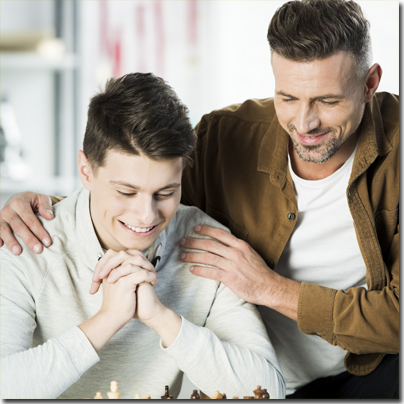 For my daughter, the keys to success included an IEP, a tutor to work with her at home, and growth mindset activities. Slowly her reading and writing have improved and I’m immensely proud of the effort she puts forth. There are many success stories out there, so have hope that if your child is struggling, you can pull through this together.
For my daughter, the keys to success included an IEP, a tutor to work with her at home, and growth mindset activities. Slowly her reading and writing have improved and I’m immensely proud of the effort she puts forth. There are many success stories out there, so have hope that if your child is struggling, you can pull through this together.
We are almost two years into her diagnosis and I think my daughter has come to accept that it’s okay to have a brain that works differently. Having a disability isn’t easy, but there are some silver linings. For example, my daughter truly knows what hard work is. Through her struggles, she’s built a layer of resilience that will serve her in school and beyond.
I have a new layer of strength too. I persevered through the assessment, got past my grieving, and was able to focus on the supports needed to help my child succeed. On difficult days, it helps to dust off the growth mindset mantra, “My daughter will learn to read in time.” As someone who’s been there, I can tell you that your child will succeed too!
The 2-Minute Action Plan for Fine Parents
Grant yourself some inspiration! Seeing your child struggle to learn is emotionally draining and it can be hard to know where to start. Take a few minutes to check out these short inspirational videos:
- We are all Different and That’s Awesome – a child describes what’s cool about his Mom’s friend with autism. Wouldn’t it be great if we all viewed differences more positively?
- 10 Famous People with Learning Disabilities Who Are Successful – many celebrities are starting to share their stories about struggling in school.
The Ongoing Action Plan for Fine Parents
If you think your child might have an LD, re-examine the five points above and choose one or two things you will start doing this week to help your child. This could include completing the online checklist or joining an online support group.
Once you’re moving ahead, develop a written action plan with specific, manageable goals. This could include scheduling a conference with your child’s teacher or an appointment with the pediatrician. It may also include researching local tutors and finding a growth mindset program that peaks your child’s interest. It’ll take some effort to find the answers you need, but recall the growth mindset: “this might take time, but I’m going to figure it out.”
Thank you, Miklo. I hope you found the information and answers you’re looking for. It’s a long journey, but there’s definitely hope too. I try to hold onto the each positive step forward.
VERY helpful.
Thank you, Jackie. I’m pleased you found this article helpful. Wishing you all the best.